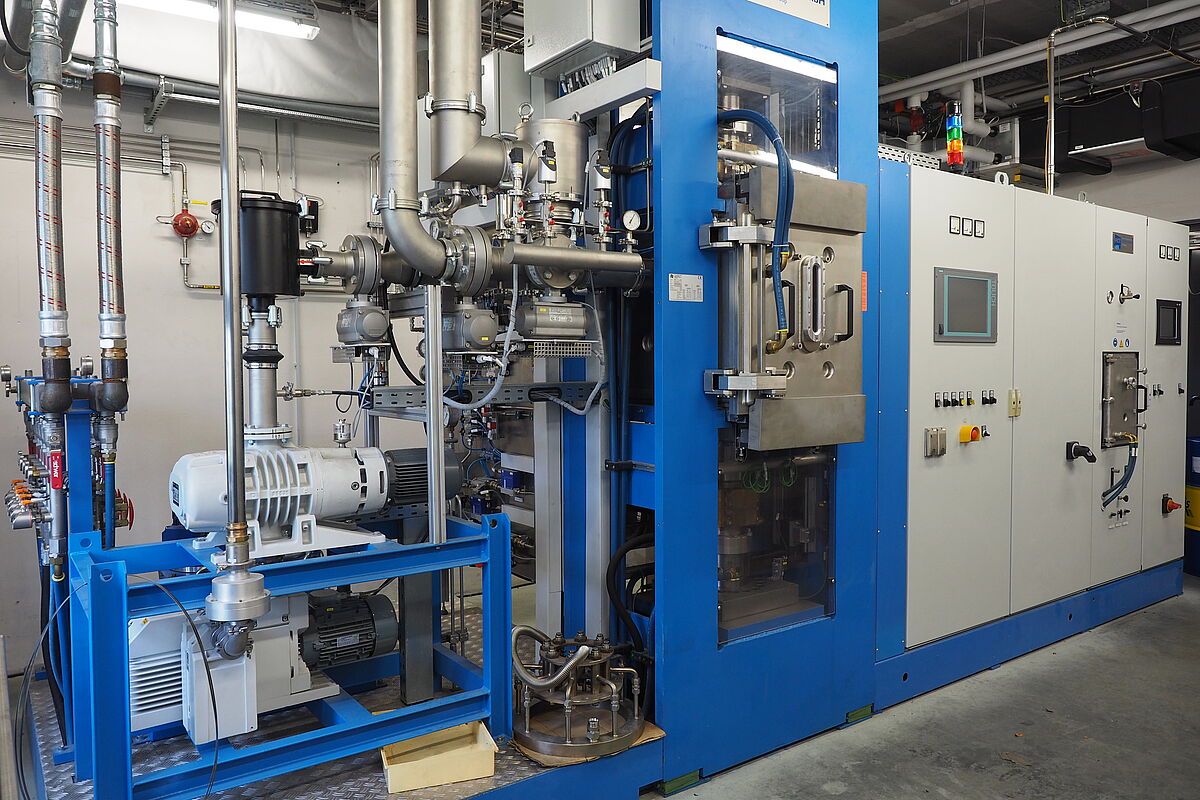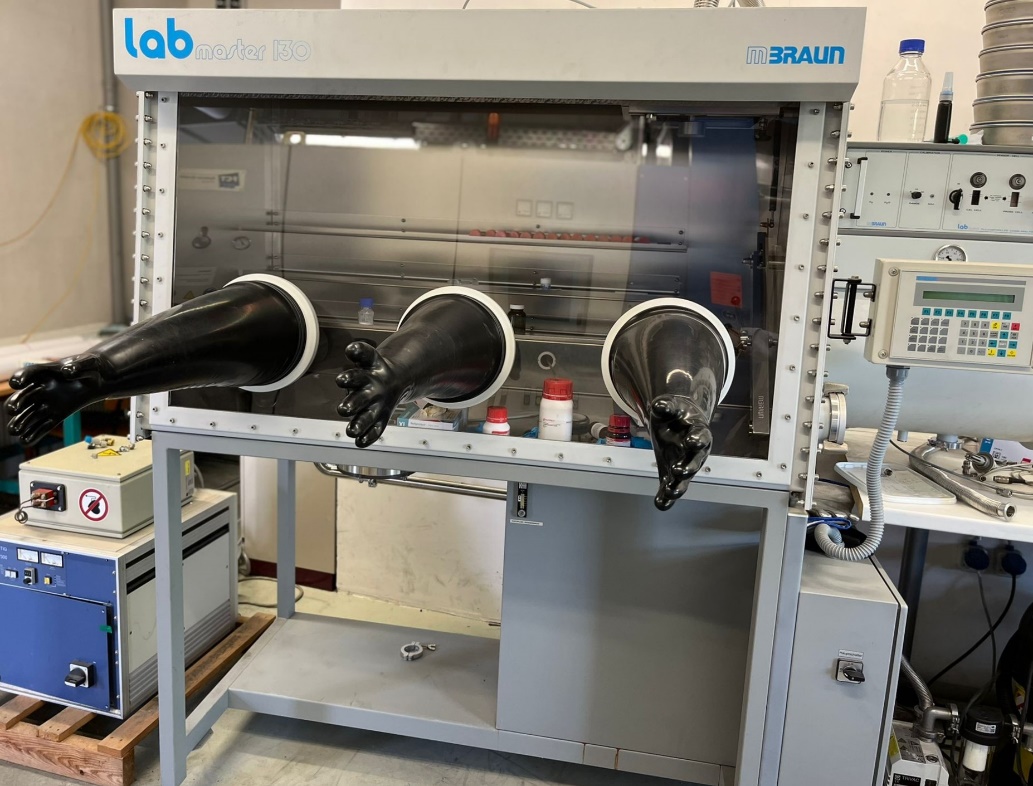Field assisted sintering technique / Spark plasma sintering
Field assisted sintering technique also known as Spark Plasma Sintering utilize pulse directed current along with uniaxial pressure to consolidate powders. The advantages of this process are cleaner grain boundaries in sintering materials, remarkable increase in superplasticity, higher permittivity in ferroelectrics, enhanced magnetic and thermoelectric properties of functional materials, improved bonding quality or reduced impurity segregation at grain boundaries as well as formation of pellets with clean and intimate solid-solid interfaces.
Specification:
- sintering temperature < 2.400°C
- heating power < 180 kW
- heating rate < 1.000 K/min
- applied force < 1.250 kN
- voltage < 8 V, current < 24 kA
- inner die diameter < 15 cm
The choice of vacuum or an inert atmosphere can strongly influence sintering and the resulting material. Moreover, the applied pulsation of directed current with possible impulse direction 0 – 225 ms can significantly alter the process.
The control and measurement of the temperature can be performed with a pyrometer and multiple thermocouples. Additionally, HP D125 machine is equipped with a unique fast or rapid gas-cooling unit. Shorter cooling times and higher cooling rates open new possibilities of consolidating materials with even smaller grains, altering and enhancing their physical and mechanical properties.
Glovebox with air-cleaning filter
M.Braun LABmaster 130 is an inert gas glovebox workstation. It is suitable for storing the reactive materials in a controlled environment to avoid unnecessary reactions in air/moisture. The glovebox has a closed-loop circulation mode and is equipped air-cleaning filter and O2 and H2O sensors. It works in both negative and positive pressure operations. The working gases are Argon and Nitrogen.
Contact: Dr. rer. nat. Abdullah Riaz


